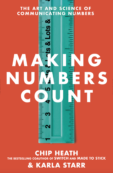This American Life recently ran an episode called “The Giant Pool of Money,” which explained the subprime mortgage crisis, and since then it has become the most-downloaded episode of all time. By a margin of 50,000 downloads and counting…
Jay Rosen at Pressthink calls it “the best work of explanatory journalism I have ever heard.” And, in the course of praising the piece, he says something absolutely brilliant: “Explanation leads to information, not the other way around.” (Forgive the extended pullquote.)
In the normal hierarchy of journalistic achievement the most âbasicâ acts are reporting todayâs news and providing current information, as with prices, weather reports and ball scores. We think of âanalysis,â âinterpretation,â and also âexplanationâ as higher order acts. They come after the news has been reported, building upon a base of factual information laid down by prior reports.
In this model, I would receive news about something brewing in the mortgage banking arena, and make note it. (ââSubprime lenders in trouble: check.â) Then I would receive some more news and perhaps keep an even closer eye on the story. After absorbing additional reports of ongoing problems in the mortgage market (their frequency serving as a signal that something is truly up) I might then turn to an âanalysisâ piece for more on the possible consequences, or perhaps a roundtable with experts on The Newshour with Jim Lehrer. I thus graduate from the simpler to the more sophisticated forms of news as I learn more about a potentially far-reaching development. Thatâs the way it works⦠right?
Wrong! For there are some storiesâand the mortgage crisis is a great exampleâwhere until I grasp the whole I am unable to make sense of any part. Not only am I not a customer for news reports prior to that moment, but the very frequency of the updates alienates me from the providers of those updates because the news stream is adding daily to my feeling of being ill-informed, overwhelmed, out of the loop. I respond with indifference, even though Iâve picked up a blinking red light from the news systemâs repeated placement of âsubprimeâ items in front of me.
On top of that, if I decide to buckle down and really pay attention to âsubprime lenders in crisisâ newsâincluding the analysis pieces and the economics columnistâI am likely to feel even more frustrated because the missing narrative prevents these good-faith efforts from making much of a difference. The columnist who says he is going to explain it to me typically assumes too much knowledge (âmortgage-backed securities?â) or has too little space, or is bored with the elementary task of explanation and prefers that more sophisticated work appear under his byline. Or maybe, as with this story, the very people paid to understand the story barely know how to explain it.
I think this is a profound insight, and it certainly echoes my own experience as a news consumer. I often have the sensation, when reading stories about unfamiliar topics, that I don’t have anywhere to “hang” the information. There’s no file in the filing cabinet that fits the new info. I’m too ignorant even to *categorize* the data and stash it somewhere meaningful. (South Ossetia is Exhibit A.) And in that situation, reading the news becomes a kind of stream-of-consciousness exercise. You may retain the occasional proper noun, and you might learn the correct use-in-a-sentence of a phrase like “subprime mortgage,” but you’re not building a cognitive “tree,” with roots and branches. There’s nowhere to hang the new info.
And I think that’s Rosen’s point. An explanation provides the filing cabinet for the information. But, even as I type that, I realize that “filing cabinet” isn’t the right metaphor — it’s not just that you feel capable of storing the information in a way that you’ll be able to access later, it’s that once the basic filing cabinet is set up, each new piece of information makes you smarter. (Versus without the filing cabinet, that isn’t the case.) So unless you guys have cooler filing cabinets than me, that’s where the metaphor fails. Metaphor assistance, anyone?
(h/t Hashim)



